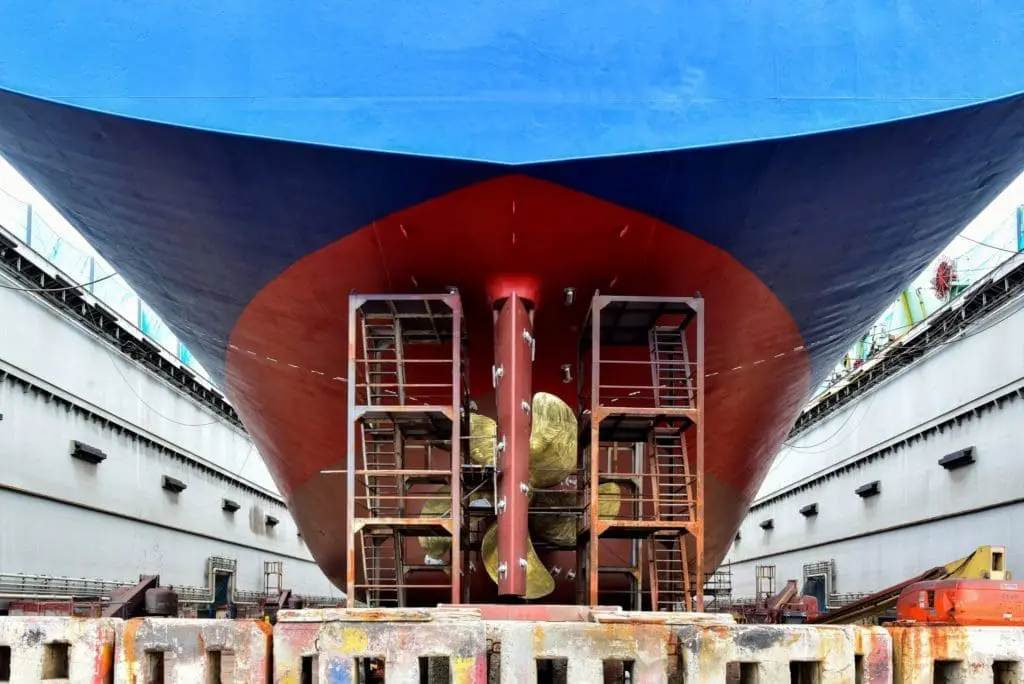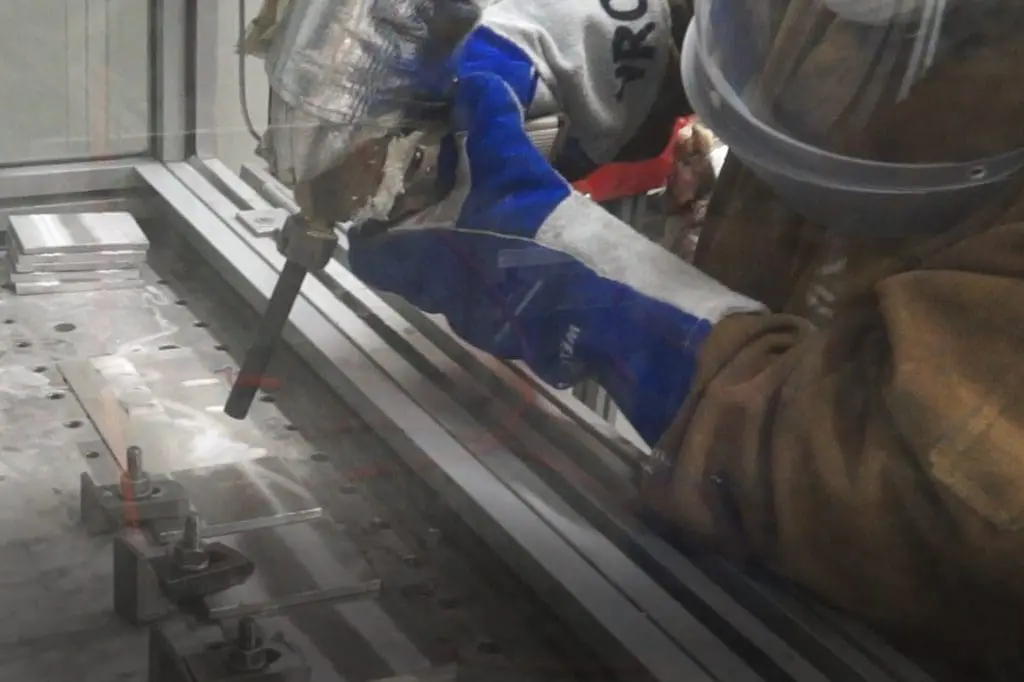This article looks at the cold spray process, its advantages; and takes a brief look at where the technology is headed. To find out more about cold spray additive manufacturing or discuss your coatings requirements in more detail, contact the team at Cold Spray.
What is the Cold Spray Process?

VRC’s high-pressure cold spray works by accelerating feedstock particles to supersonic speeds towards the part being repaired. The impact induces high deformations in the particles and the outermost skin (~1/1000th inch) of the part. This disrupts the grain structures in both, but the grain structures spontaneously re-form. This promotes metallurgical bonding between the part and the deposit and within the deposit. This is different from other thermal spraying methods as the powders are not melted throughout the spraying process, which prevents common problems seen in thermal spray and welding: Warping, heat-affected zones, low adhesion strength, limited cohesive strength, and tensile residual stresses. The particles can include metals and non-metals in many ratios, making it flexible. It can apply protective and preventive coatings as well as more conventional repairs, depending on the use case.
Use of the cold spray process is often weighed against more traditional thermal spraying. Although both coating techniques involve depositing a layer of material onto a substrate, thermal spraying achieves adhesion by mechanically bonding with a properly prepared substrate surface. Compare this to the metallurgical bonding that is achieved with high-pressure cold spray.
Advantages of Cold Spray

Prevents Heat Damage to the Substrate
Many alloys lose their beneficial qualities when they are molten for deposition in melt-based thermal coating processes. The unique nature of the cold spray process, where materials remain solid throughout the process, means that alloys, even those with low “aging” temperatures, can maintain all their positive attributes during and after application.
Some substrates are at risk of deformation, or a change in ductility or malleability, due to high heat inputs during the coating process. Cold spray uses lower process temperatures and there is no heat of fusion, so cold spray can be a workable alternative for many materials that aren’t suitable for traditional thermal spraying.
No Need for a Protective Atmosphere
Materials such as aluminum and titanium require a protective atmosphere when molten. Cold spraying takes away this necessity, potentially cutting costs and increasing successful outcomes for these materials.
“Green” Type of Technology
Since no heating, melting, or chemical reaction occurs, no toxic fumes are produced, and the generated waste materials (undeposited metal powder) are recyclable.
Cost-effective
Cold spraying can be more cost-effective than thermal spraying and delivers high-quality results. When thermal spraying produces low-quality deposits, hi-tech cold spraying can provide better and more affordable outcomes.
Repairing components rather than replacing them is often a more cost-effective route as well. In cases where the item in need of repair is large or unable to be moved, bringing portable cold spray technology to the repair site may be the only affordable solution.
What Does the Future Hold for Cold Spray Additive Manufacturing?

Cold spray coating can be used effectively in a wide range of industries, including:
- Aerospace
- Automotive
- Shipyards
- Liquid Handling
Although the concept of cold spraying has been around for forty years or so (it was discovered in Russia during the 1980s), it’s only been in the past few years that it’s begun to gain in popularity here as a viable alternative to the more traditional thermal spray coating. In comparison, thermal spraying is a coating technique that’s been in use for the last century.
More interesting than where it has been is where it is going. The following sections include a few insights into recent developments and future applications for cold spray.
New Design Techniques

Combining cold spray with traditional subtractive manufacturing methods is providing new design and fabrication possibilities:
- Adding material to the inner surface of machined channels. Adding these coatings could reduce drag coefficients or provide anti-corrosion or other protective features.
- Adding small, complex features to large machined components.
- Producing a component out of a lightweight material and adding surface coatings with desired or conductive materials.
- Producing this same type of lightweight component and adding materials to increase structural integrity while maintaining weight efficiencies.
Post-processing of Cold Spray Coatings
Heat treatment and other post-fabrication processes are common for the completion of traditionally manufactured components. While cold spray coatings are typically left as-deposited there is increasing research into post-deposition heat treatments. For example, there have been positive test results reducing the porosity of the coatings with the application of short induction heating periods, which limits the heat input and the depth of heating.
Increased use for Repairs

As manufacturers look for ways to reduce costs, custom repairs are an increasingly important service. Cold spray coating can be quickly applied to worn components to bring them back into dimensional tolerances. These same coatings can also have enhanced performance characteristics such as anti-corrosion protection that will extend the life of the repaired component even further. Hard, galvanically inert phases such as ceramic particles can also be added to confer wear resistance without compromising the corrosion resistance.
As advancements continue in the development of portable cold spray systems, the options to repair large components in place will also become a more attractive option. This option will expand the choices to repair large items rather than endure the downtime while they are sent off-site or engage in the even more costly option of replacing them completely.
As awareness grows of the versatility, fast set-up, and improved economic costs of cold spray technology, a growing number of companies will consider adding it to their fabrication and repair capabilities.
Cold Spray is a leading provider of cold spray technology. To find out more about the benefits of cold spray techniques or to discuss new ways this developing technology could be applied in your business, get in touch with the team.
